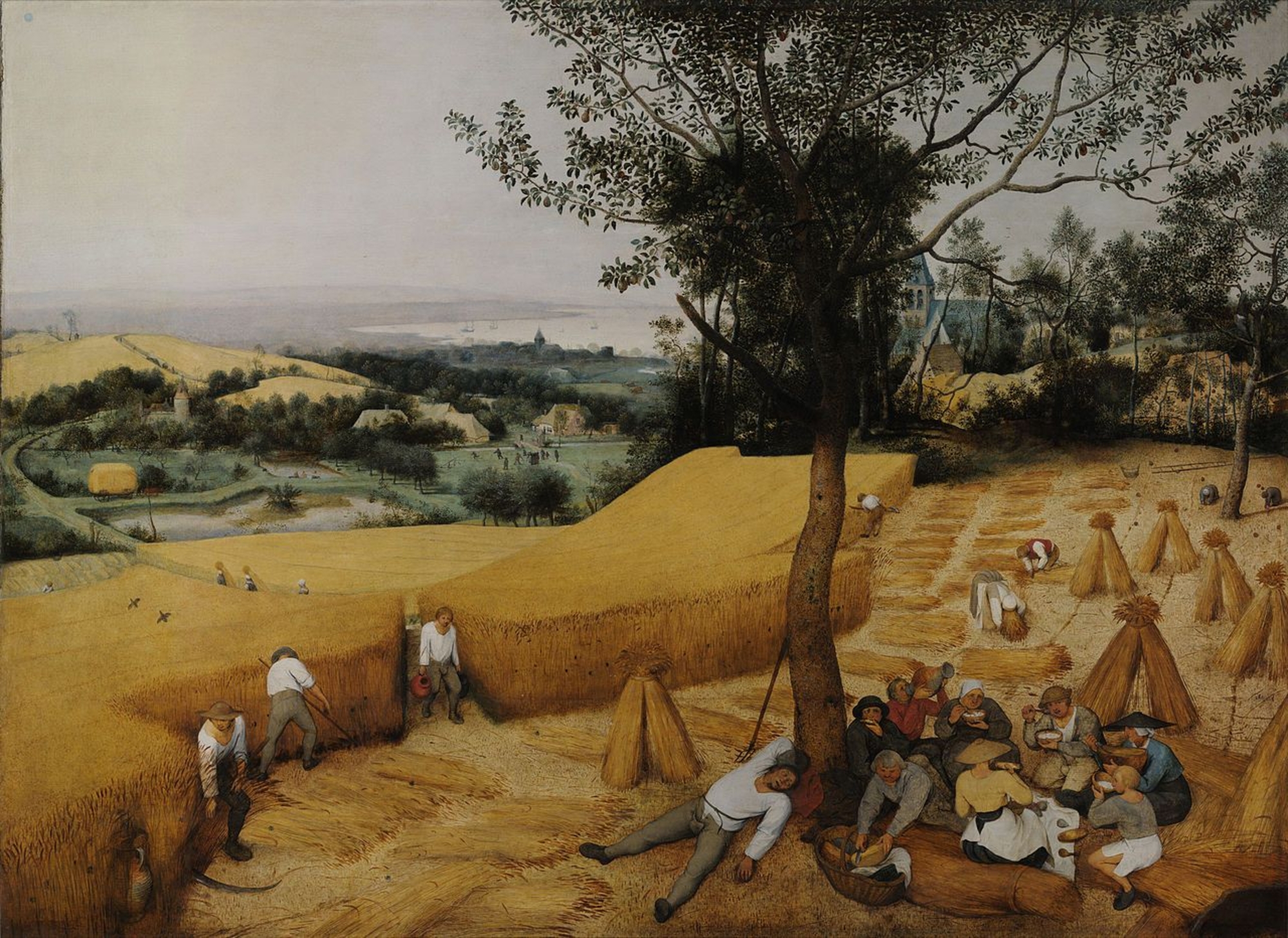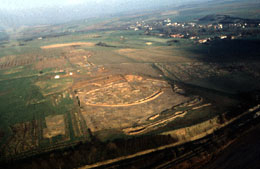- Home
- Discoveries
- The first metalworkers
- A Bronze Age site at Étaples
Aerial view of the site at Étaples-Tubersent (Pas-de-Calais). Photo: Yves Desfossés.
The mouth of the Canche River in Pas-de-Calais has long been known for its rich archaeological layering from all eras. In 1994–95, a rescue archaeology campaign was carried out along the path of the A16 motorway and on the site of a service station, on the border between the towns of Étaples and Tubersent. These excavations strengthened our understanding of this region (Desfossés 1997). On the right bank of the river, at a distance of eight kilometers from the sea, the protohistoric site occupies the rim of a plateau, intersected on one side by a small dale, and on the other by the small valley of Huitrepin.
There are three parts to the archaeological layer
A. An Early Bronze Age habitation to the south. It consists of a roughly oval-shaped enclosure measuring 120 x 95 meters. Postholes and ditches were found inside the enclosure, but also outside (small oval-shaped building). Fragments of cord-decorated pottery are from the Early Bronze Age.
B. A large, partially leveled-off enclosure in the center. Here we find two huge concentric circular ditches, 160 meters and 130 meters in diameter. The width of the ditches is also unusual: they are four to five meters wide and two to two and a half meters deep. Fragments of cord- and finger-decorated pottery are from the Middle Bronze Age. This imposing structure is very similar to British (ring fort), whose defensive nature has been shown many times.
C. A simple circular enclosure to the north, sixty meters in diameter. The ditch is nearly two meters deep and four meters wide. Pottery shards that have been found are attributed to the Middle Bronze Age. Carbon-14 dating confirms the suggested chronology. This last circle seems to correspond to a leveled-off gravesite.
It is interested to speculate whether the initial constructions in the Early Bronze Age were the work of a community coming from Southern England, within the framework of a colonization of northwestern France. One could also imagine, especially for the period following the Middle Bronze Age, a population already present, with connections to its neighbors on the Atlantic
and the North Sea.
In addition, a small native Gallic farm was discovered, with a path running directly north of it.
The Mont Bagarre site at Etaples could not be seen from the air, due to the presence of a thick layer of silt. However, sample trenches have allowed us to uncover the vestiges. Based on these discoveries, it will be necessary to reexamine similar structures found from the air, and particularly those discovered along the North Sea and Channel coastlines.

